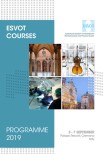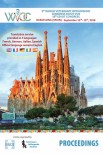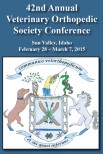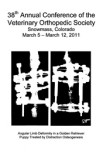OBJECTIVE: To evaluate the torsional properties of the Targon® Vet Nail System (TVS) in small canine femurs and to compare these properties to those of the 2.4 mm LC-DCP® plates.
METHODS: Thirty-six cadaveric femurs were allocated to three groups (n = 12). In all bones, points just distal to the lesser trochanter and just proximal to the fabellae were marked and a midshaft transverse osteotomy was performed. Group 1: bones were fixed with the 2.5 mm TVS with the bolts applied at the pre-identified marks. Group 2: A TVS system with 25% shorter inter-bolt distance was used. Group 3: A 7-hole 2.4 mm LC-DCP® plates were applied. All constructs were tested non-destructively for 10 cycles, followed by an acute torsion to failure.
RESULTS: Torque at yield was 0.806 ± 0.183 and 0.805 ± 0.093 Nm for groups 1 and 2 and 1.737 ± 0.461 Nm for group 3. Stiffness was 0.05 ± 0.01, 0.05 ± 0.007, and 0.14 ± 0.015 Nm/° for groups 1 to 3 respectively. Maximal angular displacement under cyclic loading was 16.6° ± 2.5°, 15.6° ± 2.1°, and 7.8° ± 1.06° respectively. There was nosignificant difference for any of the parameters between groups 1 and 2. Both torque at yield and stiffness were significantly greater between group 3 and groups 1 and 2.
CLINICAL SIGNIFICANCE: The TVS had approximately half the torsional strength and approximately 1/3 of the stiffness of the 2.4 mm bone plate. Slippage of the locking mechanism was probably the cause of the early failure. The system should be considered as a low-strength and low-stiffness system when compared to bone plates.









